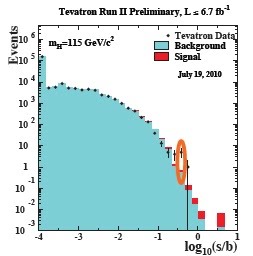Y
yevaud
Guest
PDF Report: http://www.fnal.gov/orgs/fermilab_users ... -final.pdf
Page 67 will show the elusive event.
Page 67 will show the elusive event.

yevaud":ht1jmqoi said:Well, that's quite interesting, but I don't believe the wonks at FermiLab will be agreeing with you any time soon.
andwor":25nb70bq said:Dear yevaud
I agree I am not expecting this discovery to make harmonic quintessence mainstream overnight.
I am however interested to know why a number of published papers have recieved so little attention. One paper describes the derivation of quantum physiscs and the energy equivalence equations, from first principles. [1].
andwor":3dd3bosq said:I think that attests to the strength of the journal, in that it is willing to take examine novel but robust ideas about contemporary physics.
The Tevatron has made it's runs, and has already excluded the 158-175 GeV range, putting paid to several notable theories. It has also begun to exclude the extra-light Higgs range, below 110 GeV. Five tantalizing candidate "b-bbar" events for a light 113-115 GeV Higgs boson were seen.
It may be possible to estimate the mass of the Higgs boson indirectly. In the Standard Model, the Higgs boson has a number of indirect effects; most notably, Higgs loops result in tiny corrections to masses of W and Z bosons. Precision measurements of electroweak parameters, such as the Fermi constant and masses of W/Z bosons, can be used to constrain the mass of the Higgs. As of 2006, measurements of electroweak observables allowed the exclusion of a Standard Model Higgs boson having a mass greater than 285 GeV/c2 at 95% CL, and estimated its mass to be 129+74−49 GeV/c2 (the central value corresponds to approximately 138 proton masses).[19] As of August 2009, the Standard Model Higgs boson is excluded by electroweak measurements above 186 GeV at 95% CL. However, it should be noted that these indirect constraints make the assumption that the Standard Model is correct. One may still discover a Higgs boson above 186 GeV if it is accompanied by other particles between Standard Model and GUT scales.
csmyth3025":1vjfbrw3 said:It would seem, from this passage and from the Tevatron results, that the Standard Model will probably have to be revised if the Higgs boson isn't found in the 175-186 GeV range or the 110-158 GeV range. Am I understanding this correctly?
Chris


